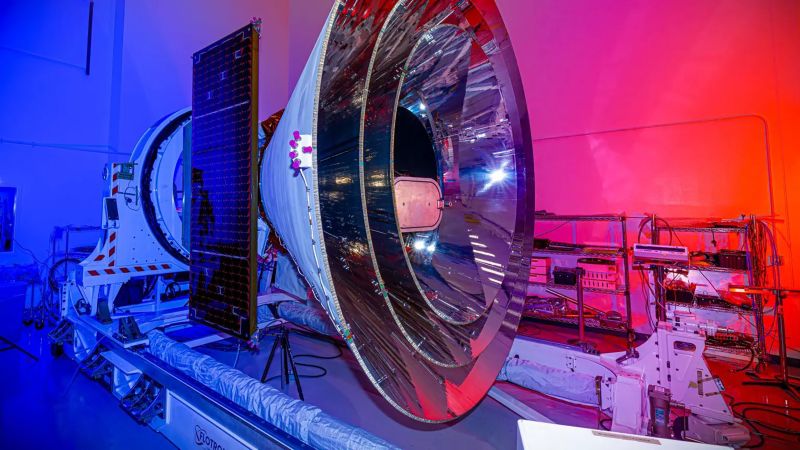NASA has been working diligently on two fascinating and groundbreaking missions aimed at exploring the universe and understanding vital components of life within the Milky Way. The space agency’s newest telescope, known as SPHEREx (Spectro-Photometer for the History of the Universe, Epoch of Reionization and Ices Explorer), is poised to seek the fundamental ingredients necessary for life within our galaxy. In conjunction, a mission named PUNCH (Polarimeter to Unify the Corona and Heliosphere) will focus on our sun, observing its influence on the solar system. Together, these missions are set to launch aboard a SpaceX Falcon 9 rocket from Vandenberg Space Force Base in California, with coverage available through NASA’s YouTube channel and the NASA+ app.
The anticipated launch is scheduled for 10:09 p.m. ET (7:09 p.m. PT) on Saturday, however, should any issues arise, multiple launch windows extend through April. The launch window originally opened on February 28 but faced interruptions due to weather conditions and operational challenges related to the missions’ integration onto the rocket. After necessary adjustments were made, NASA’s mission managers conferred with representatives from SpaceX and agreed to proceed with the launch.
Though SPHEREx and PUNCH serve entirely distinct objectives, their co-launching strategy enhances mission efficacy by enabling “more science into space for less cost,” according to Dr. Nicky Fox, associate administrator for NASA’s Science Mission Directorate. Both spacecraft will orbit in a sun-synchronous orbit, allowing them to maintain a constant orientation relative to the sun throughout the year, which is optimal for their respective studies.
SPHEREx’s primary focus is to investigate and illuminate how the universe has changed over time while also determining where essential life ingredients may have originated in the cosmos. It aims to generate a comprehensive map of the night sky in 102 different colors of infrared light, which is invisible to human sight. This mapping, when completed, will allow scientists to analyze up to 450 million galaxies and 100 million stars, effectively enhancing our understanding of cosmic inflation and the origins of celestial bodies.
One of the goals of SPHEREx is to search for signs of water, carbon dioxide, and other necessary ingredients for life embedded within the cosmic clouds that give rise to planets and stars. By identifying these key elements and their distribution, researchers can better understand how they may influence the formation of new planetary systems throughout the galaxy, particularly focusing on the molecular clouds where stars are born.
On the other hand, PUNCH will deploy a constellation of four small satellites to observe the sun’s outer atmosphere, known as the corona, and its solar wind. This mission is crucial for understanding how solar activity can impact space weather that, while beautiful in the form of auroras, can also disrupt communications and power grids on Earth. PUNCH, as it observes solar maximum—an intense period in the sun’s 11-year activity cycle—will provide critical data that may enhance predictions regarding space weather and its potential impacts on Earth.
Both missions represent a thorough representation of NASA’s scientific pursuits, capturing unparalleled views of the universe around us. Dramatically different in their methodologies and aims, they are poised to yield revolutionary insights into both distant galaxies and the sun that influences life on Earth. Dr. Mark Clampin from NASA emphasized their significance in covering the full spectrum of NASA’s scientific endeavors, underscoring how these missions operate at various scales, compelling us to comprehend our universe’s vastness and the sun’s role in sustaining life on our planet.
After their launch, SPHEREx is expected to orbit Earth from about 404 miles (650 kilometers) overhead, engaging in a two-year mission dedicated to collecting data and ultimately revealing previously unseen aspects of not only our galaxy but the universe as a whole. Concurrently, with PUNCH’s innovatively coordinated approach of utilizing a network of spacecraft, significant advancements are anticipated in our understanding of solar dynamics and their far-reaching effects on the heliosphere, shaping both scientific knowledge and technological preparedness for future space weather phenomena.
Indeed, both SPHEREx and PUNCH represent the essence of human curiosity and our relentless quest to explore and understand the cosmos, forging ahead into uncharted territories of knowledge and discovery.












